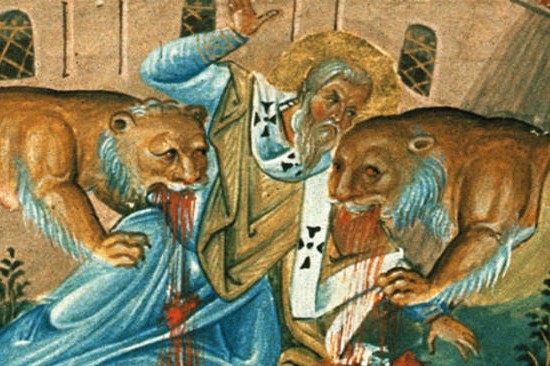
Saint of the Day for October 17: Saint Ignatius of Antioch
Saint Ignatius, History: Antioch, in present-day Syria, is the third largest metropolis in the ancient world, after Rome and Alexandria, Ignatius became its bishop around 69, succeeding St. Evodius, but especially the apostle Peter who had founded the Church in that city.
Originally from a non-Roman pagan family, Ignatius had converted to Christianity late in life through the preaching of St. John the Evangelist, who had come all the way to those lands.
On his way to martyrdom
Ignatius was a strong bishop, a pastor burning with zeal.
Followers of his Church call him a believer “of fire,” just as the etymology of his name suggests.
During his episcopate the terrible persecution of Emperor Trajan begins.
The bishop also falls victim to this, refusing to recant and for this he is condemned to be transported in chains to Rome where he will be mauled by ferocious beasts in the Colosseum during the celebrations for the victorious emperor in Dacia.
Thus begins his very long journey to the gallows, during which he will often be tortured by guards, until his arrival in Rome and the execution of his sentence in 107.
Saint Ignatius: the seven letters
Of the journey to death we are left with seven beautiful letters he wrote, which also constitute an inimitable record of the life of the Church at the time.
Upon reaching Smyrna he wrote the first four, three of them addressed to as many communities in Asia Minor: Ephesus, Magnesia and Tralli.
In them he thanks them for the many demonstrations of affection.
The fourth letter, on the other hand, is addressed to the Church of Rome and contains a plea not to hinder his own martyrdom, of which the bishop feels honored, considering it a chance to retrace the life and Passion of Jesus.
Passing through the Troad, Ignatius writes three more letters: to the Church of Philadelphia, Smyrna and the bishop of the latter city, Polycarp.
In the missives he asks the faithful to support the Church of Antioch, tried by the impending fate of its pastor, and to the bishop he offers interesting directives on the exercise of the episcopal function.
We are left, moreover, with pages of genuine declarations of love for Christ and his Church, which for the first time is defined as “catholic”; evidence of the tripartite conception of the Christian ministry between bishop, presbyters and deacons; as well as directives on how to counter the Docetist heresy that believed the Incarnation of the Son to be only apparent and not real.
But above all, in his letters, we read the desire, almost the prayer, to the faithful to keep the Church united against everything and everyone.
